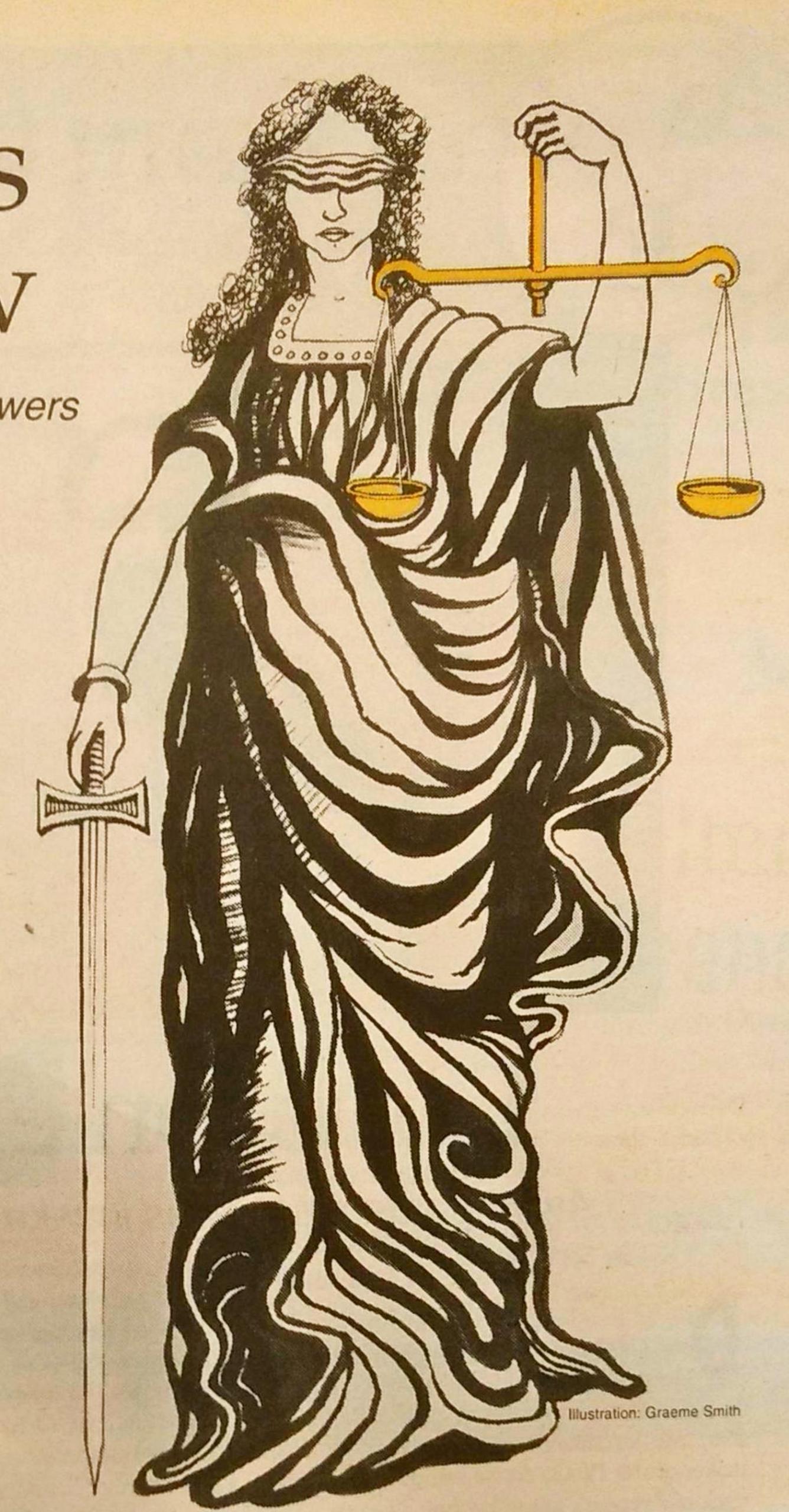By Jessie Stones
It seemed like a minor event at the time.
A few posters around campus caught a student’s eye last November and she complained they were racially offensive. The posters were removed, the incident appeared only a small item at the end of The Eyeopener’s news section.
But the school hired a human rights investigator, who questioned several Ryerson administrators and students for nearly a year afterwards.
The case cast a shadow of suspicion over RyeSAC campus groups administrator Leatrice Spevack, graphic communications management program chair Mary Black and the schools director of harassment prevention services, Janet May.
One year later, nobody will say what the investigator found — if anything. The only apparent result, good or bad, is that months of scrutiny have made those involved afraid to say something that could trigger another investigation. Some have lost sleep and suffered emotional turmoil. And a few of them wonder aloud why there’s no way to decide when a full-scale inquiry does more harm than good.
Last November, the fourth-year graphic communications class planned a trip to Margarita Island in Venezuela. To raise funds, members of the class decided to sell their services for a day to fellow GCM student — doing homework, washing cars, cleaning bathrooms.
Two students made 10 posters — it took them about five minutes — and put them up on GCM bulletin boards.
The fundraiser was named “Slave 4 a Day!” That’s when the trouble began.
“We made them on a whim,” one of the students told The Eyeopener last year. “They were taken out of context.”
Leatrice Spevack was leaning on the front counter in the RyeSAC office on Nov. 10, 1999, chatting with the receptionist, when a distraught continuing education student walked into the office.
The posters’ unintentional allusions to a painful history had offended the black student, whose name has been withheld at the administrator’s request. Spevack, although she didn’t have to get involved, wanted to help,
“She was upset, with good cause,” Spevack says. “When I saw [the posters], I thought ‘Uh-oh, that’s not good.’”
Spevack got the posters removed and approved another name — “Servant 4 a Day.” But Spevack didn’t actually see the news posters: “The somehow more politically correct Servant 4 a Day.”
When she was the new posters, the complainant was furious at the sarcasm and returned to complain again. This time Spevack referred her to the school’s harassment office. From there, the details get fuzzy.
Once a complaint has been brought to the harassment office, how it’s handled is confidential.
The office was opened 1990 to provide a harassment-free campus for staff, students and faculty. The current harassment office, Ann Whiteside, was hired last May.
When someone brings a complaint to the office, it can be handled informally, where the officer will talk about options and give the complainant ideas about handling the problem. It can also be dealt with formally, where a complaint is filed and an investigation is started. The officer tries to work out an acceptable resolution — an apology, a policy change, a disciplinary action — via mediation. “Students have a right to feel accommodated,” Whiteside says.
On Nov. 15, the auction was cancelled and organizers delivered a written apology to the complainant. But she apparently wanted more.
“Some people just aren’t happy [with the harassment office’s findings],” Whiteside says. “They want more, or something more drastic, like a firing.” But the office is non-punitive — it can not recommend dismissals.
Policy says if a complainant is not satisfied, they can go to the Ontario Human Rights Commission. In exceptional cases — if the harassment office could be biased or too busy — an independent investigator is hired.
That’s the route it seems this complainant chose. “If someone requests it, we get an outside investigator,” Mays says. “It’s that simple.”
It’s the only case sent to an outside investigator since Ryerson’s v.p. administration and student affairs Linda Grayson took responsibility for the harassment office in early 1998. “It’s always difficult in those sorts of cases,” Grayson says. “It would be nice if there was an instruction manual, but there isn’t.”
The process of an investigation is very secretive. Grayson isn’t allowed to say who the school hired. The investigator can’t say who she investigated. She can’t, or won’t, disclose her fees. She can’t even admits she worked for Ryerson — if she hadn’t called a student journalist as part of her investigation, it would have been tough to find her.
Leslie H. Macleod can only speak in general terms about what she does.
She’s a specialist in conflict resolution — in turns of a mediator, facilitator, fact-finder, investigator and arbitrator. Her job, she says, is to decide what’s true and who’s being honest. She investigates where something happened, and if it did, whether it is in contravention to a relevant policy. “It’s usually a matter of finding whose claims are more probable,” she says.
Macleod filed a final report to Grayson and those investigated in September. The results of the report are confidential, and administrators are vague.
“Nobody’s right, nobody’s wrong,” Whiteside says. “Except sometimes, when one is more wrong.”
For Leatrice Spevack, the investigation was devastating. “I felt victimized,” she says. “I lost sleep. This really affected my family life.” At one point she says she was considering hiring her own lawyer to advise her. The investigation has taken its toll on her professional life as well. She says she occasionally finds herself doubting her judgement at work. It has also changed her outlook on getting involved with students’ problems. “After going through a year of this, I feel less inclined to get drawn into things, less willing to help when I don’t have to.”
Mays, who cancelled the slave auction last November, says she doesn’t even want to talk about the case. Sounding anxious, she says she is still sensitive about the issue and isn’t prepared to give an interview.
At the time the auction was cancelled, Black was quoted in the Nov. 24 issue of The Eyeopener saying, “I think she [the complainant] just wanted to paint my students black.” Macleod phoned reported Allan Woods in August — eight months later — and questioned him in detail about Black’s quote, and whether or not he felt it had racial overtones. While Black says she didn’t agree with some of the reporters findings and says her words were misrepresented, she says the investigator was just trying to be fair. “I never felt I was on trial,” she says.
Spevack says there were many times she just wanted the ordeal to be over. One of the students responsible for making the posters agrees.
“I can see it did hurt someone, that we didn’t take into consideration everyone’s feelings,” he says. “But it was taken too far. I can’t believe a year later it’s still an issue.”
While the investigation is over — the phone calls have stopped and a report has been filed — questions linger in the minds of those investigated.
“I think we have created a culture of victims,” Spevack says. “Sometimes we have to examine how much we bend backward.”










Leave a Reply